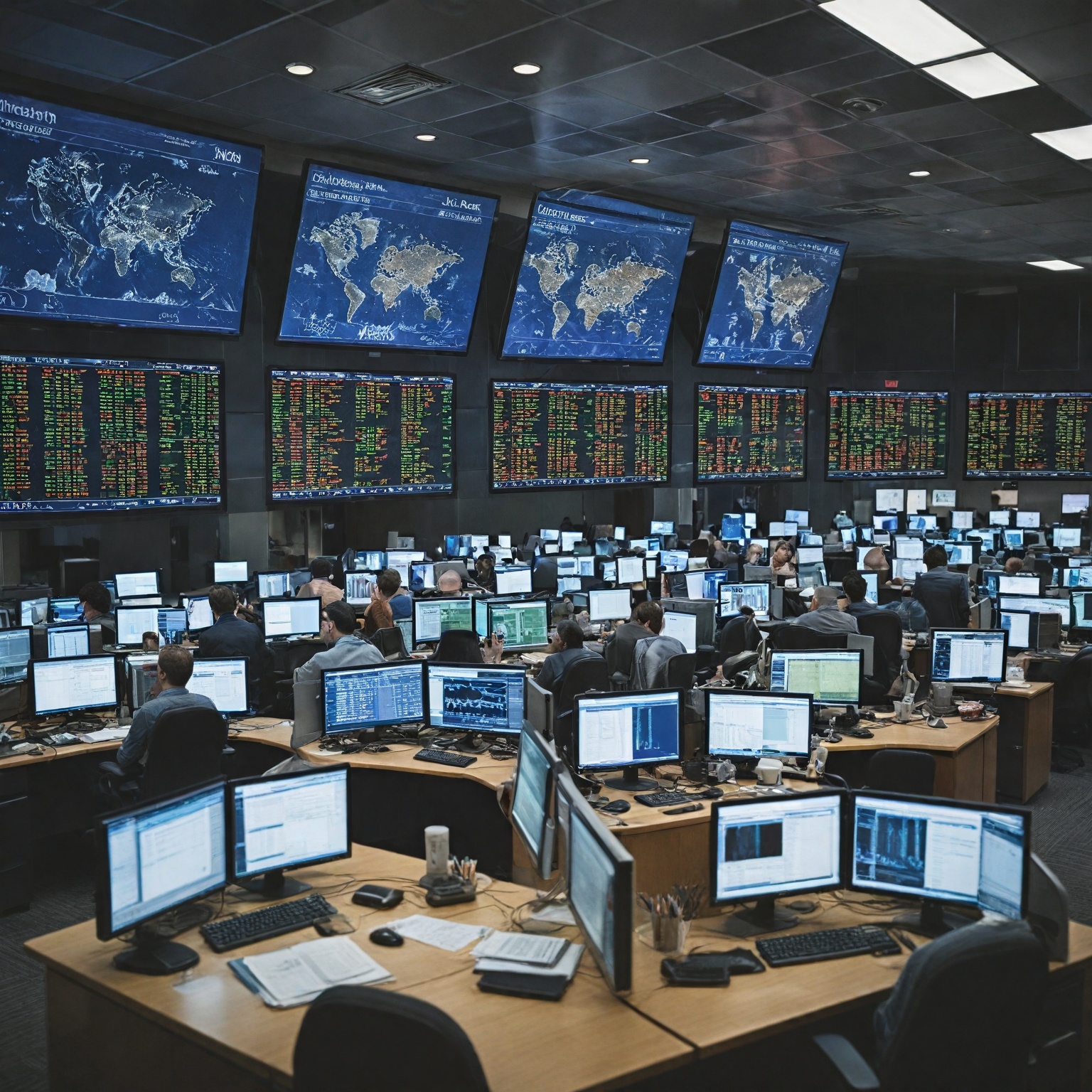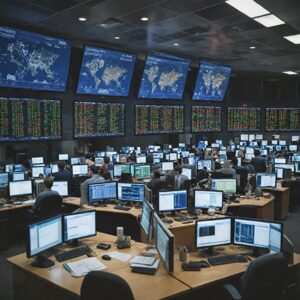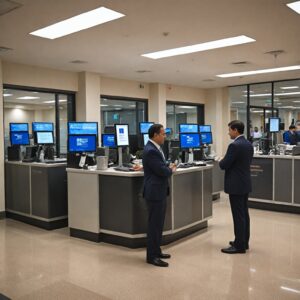Summary
The topic of “Discover the Unexpected Twist: Why Positive Economic News is now a Cause for Concern” delves into the complex interplay between economic news sentiment, market volatility, and the health of the global economy. Amid economic downturns, positive economic news has historically been seen as a sign of recovery. However, recent trends suggest that such positivity may be causing concerns. Based on various economic growth theories like the Solow-Swan model and the Endogenous Growth Theory, unexpected innovations, particularly those related to financial markets and asset prices, can cause temporary economic fluctuations and ultimately lead to market instability.
The recent trend of increasingly positive economic news in spite of ongoing economic difficulties has been highlighted as a potential cause for concern. Such unexpected positivity can trigger market volatility, potentially leading to a decline in economic growth. Furthermore, innovations in information technologies have amplified the speed and reach of economic news, influencing market sentiments and valuations. Even positive economic news can drive sudden spikes in financial market volatility and cause significant drops in asset prices after a negative shock.
A noteworthy observation is the disconnect between economic fundamentals and news sentiment, with an increasing negativity bias in economic reporting. This can affect consumer attitudes and perceptions of the economy, leading to inaccuracies and potential instability. Moreover, the influence of unexpected news innovations on various economic sectors, notably financial markets, credit, borrowing, and energy, can cause persistent economic fluctuations and significant productivity increases. These innovations may ultimately contribute to economic uncertainty and instability.
In light of these observations, positive economic news, particularly unexpected news innovations, needs to be approached with caution due to their potential impacts on economic growth, market volatility, and sectoral developments. The article argues for the need to balance sentiment analysis with thorough research and sound risk management practices to navigate these complexities and enhance investment outcomes.
Background
The market is inherently forward-looking, typically beginning to recover before an economic downturn has officially concluded. Historical data suggests that waiting for a complete recovery often results in buying stocks at significantly higher prices. Economic growth theories such as the Solow-Swan model and the Endogenous Growth Theory provide important context in understanding these market fluctuations.
The Solow-Swan model, an extension of the 1946 Harrod-Domar model, seeks to explain long-term economic growth through factors like capital accumulation, labor growth, and productivity increases driven largely by technological progress. The Endogenous Growth Theory, on the other hand, emerged as an alternative to the neoclassical growth theory in the 1980s. This theory posits that economic growth is primarily the result of internal forces like human capital investment and innovation. The theory further suggests that policies encouraging openness, competition, innovation, and change can promote economic growth.
However, unexpected innovations, particularly in the financial markets and asset prices, can cause temporary economic fluctuations, aligning with economic theory. In recent years, analysis has shown that economic news sentiment has deviated more from the fundamentals and been persistently negative. Despite a predicted positive sentiment, a discrepancy has been observed whereby the national economic news was slightly more positive than expected in the last two quarters. This unexpected positivity in the face of economic downturns forms the foundation of the concerns discussed in this article.
Market Reaction to Positive Economic News
According to the news-driven business cycle view, changes in expectations due to news have an important influence on economic fluctuations. These fluctuations, whether positive or negative, have the potential to cause significant changes in market values, particularly when the news comes as a surprise. This has the potential to increase market volatility, potentially leading to a decline in economic growth.
Innovation, labelled as noise, has temporary positive effects on asset prices, with this effect being orthogonal to news shocks. These shocks, both positive and negative, often lead to drastic changes in stock prices. However, this positive effect on asset prices is only temporary.
Under the endogenous growth theory, agents optimize the allocation of resources to research and development, leading to technological progress. This theory has been further supported by models incorporating imperfect markets and R&D into the growth model.
However, it is important to note that macroeconomic volatility can have detrimental effects on growth, despite the fact that high investment rates are often observed in volatile sectors. The link between economic growth and volatility remains theoretically ambiguous.
Case Studies
Global News Sentiment Index vs. the “Fear Index”
Technically, the Global News Sentiment Index mirrors other measures of global risk aversion, such as the CBOE Volatility Index, or VIX, which represents market expectations of volatility over the coming 30 days and is often called the “fear index”. The index based on global news is, however, a better predictor of future movements in international asset prices than the VIX, demonstrating the impact of text-based inputs in economic and financial research.
Innovation and Economic Growth
IT innovations, organizational redesign, and new product introductions show a strong relationship and their interaction has been associated with economic growth. They also influence demand for investment and labor. Furthermore, unexpected news innovations are seen to lead to large and persistent economic fluctuations and permanent increase in productivity.
Disconnect between Economy and News Sentiment
An interesting case is presented by the growing disconnect between the economy and news sentiment. A review of the period from 2018 to 2023 showed that the economy would have to be in significantly worse shape for the news sentiment to match the state of the economy. Furthermore, frequent economic policy adjustments leading to economic policy uncertainty have been shown to presage increased stock market volatility and reduced employment, gross investment, and industrial production.
Trade Wars and Global Trade
In an era of global trade, a trade war can become very damaging to the consumers and businesses of both nations, affecting many aspects of both economies. An examination of a two-sector economy also showed that changes in intermediate input trade as reflected in cost share fluctuations are key to determining the amplification properties. The escalation of a conflict can also have significant impacts on natural resources, the economy, and price action.
Uncertainty and the Macro-Financial Stability Tradeoff
A disconnect between the economy and the market increases the chances of a sudden jump in financial market volatility and a big drop in asset prices following an adverse shock. High economic uncertainty can amplify what we call the macro-financial stability tradeoff associated with loose financial conditions.
Volatility in Financial Markets
In finance, volatility represents the degree of variation in trading prices over time, often measured by the standard deviation of logarithmic returns . There are two main types of volatility; Historic volatility, which measures a time series of past market prices, and Implied volatility, which is forward-looking, being derived from the market price of a market-traded derivative . An increase in unknowns can enhance the risk of financial market volatility and potentially result in a sharp decline in economic growth .
Investor behavior also plays a critical role in market volatility. One study found that if new information aligns with an investor’s existing beliefs about an investment decision, the investor is more likely to accept it readily, even if the information is flawed . This is known as an experiential bias, recency bias, or availability bias . For instance, the financial crisis of 2008-2009 led many investors to exit the stock market due to an expected continuation of economic hardship . This behavior can contribute to market volatility, as it alters the supply and demand of a company’s stock .
Role of Emotions and Expectations
Understanding market sentiment is crucial for investors as it can predict market trends and guide investment decisions. Market sentiment reflects the collective attitudes and emotions of investors, which can vary from bullish (optimistic) to bearish (pessimistic). A bullish sentiment, characterized by optimism, is indicative of an expectation for rising stock prices. Conversely, a bearish sentiment points to pessimism and the expectation of falling prices.
The sentiment, either positive or negative, can significantly influence a company’s prospects and thus its valuation. Positive sentiment can lead to a more favorable view of a company’s prospects, resulting in higher valuations. In contrast, negative sentiment can erode confidence, thereby decreasing valuations.
The prevailing sentiment towards specific industries or sectors can shape investor perception of companies within them. Industry-specific factors such as technological advancements, regulatory changes, and shifts in consumer preferences can greatly impact company valuations. Therefore, analyzing the competitive landscape and identifying market leaders are strategies investors can employ to gauge a company’s positioning and growth prospects.
Additionally, broader economic trends such as interest rates or global events can influence industry performance and hence, need to be factored into investment decisions. It’s important for investors to be aware of the impact of political and geopolitical events on the market. These events, including elections, government policies, conflicts, and trade disputes, have the potential to disrupt markets, influence investor sentiment, and shape economic outcomes.
To successfully navigate these uncertainties, investors should balance sentiment analysis with thorough research and sound risk management practices. By recognizing the impact of sentiment on prices and leveraging or counteracting it, investors can make more informed decisions. This well-rounded approach to investing that incorporates sentiment analysis can ultimately enhance investment outcomes.
Concerns Associated with Positive Economic News
The increasing negativity bias in the news, particularly in economic reporting, poses several complex interpretations and implications. One such complexity concerns the causality direction between consumer attitudes towards the economy and the tone of the news. There is uncertainty about whether consumers are more negative due to the news, or if the news is increasingly negative to reflect consumer beliefs. Another complexity lies in the potential inaccuracies in household perceptions of the economy.
On the other hand, news tone might impact how people perceive the macroeconomy, but may not greatly influence how they view their own financial status. Research reveals that economic news sentiment is gradually disconnecting from fundamentals, consistently steering towards negativity. This trend has seen a slight reversal in recent quarters, where national economic news was slightly more positive than predicted.
Several theories have been proposed to explain these phenomena, such as lingering effects of high inflation rates, dissatisfaction with societal trends, and misconceptions about the actual state of the economy.
Surprisingly, positive economic news also triggers concerns. Unexpected news innovations, especially those associated with developments in financial markets, credit, and borrowing, lead to significant and long-lasting economic fluctuations. These shocks could permanently increase productivity, contributing to economic uncertainty and instability.
Moreover, innovations in information technologies have drastically increased the reach and speed of economic news, which can greatly influence market participants’ sentiment. This can, in turn, affect a company’s valuation and the market’s volatility. Additionally, positive news could drive sudden spikes in financial market volatility and cause significant drops in asset prices after a negative shock.
Influence of Unexpected News Innovations on Economic Sectors
Unexpected news innovations in the form of an aggregated news index, derived from the topics with the highest predictive scores, have been associated with persistent economic fluctuations, particularly in financial markets, credit and borrowing sectors. Not only are these news shocks tied to financial market developments, but they also show a minor relation to sectors such as energy, which holds significant importance in economies like that of Norway.
In contrast, unexpected innovations to asset prices, orthogonal to news shocks and labeled as noise, exhibit only temporary positive effects. This observation aligns with prevailing economic theory. Furthermore, these asset price fluctuations show consistency with the Solow–Swan model’s understanding of output growth, where unexplained changes in the growth of output, after accounting for the impact of capital accumulation, is referred to as the Solow residual.
In light of these revelations, it is essential to consider that aspects of productivity growth slowdown encompass the declining productivity of research workers, diminishing returns to drug innovation, and the evolutionary impact of robots and artificial intelligence, replacing workers gradually and only in a minority of industrial sectors. This perspective aligns with endogenous growth economists who believe that productivity improvements are directly linked to faster innovation and more investments in human capital.
Studying the heterogeneity of these elasticities of substitution across different sectors reveal that sector-specific productivity shocks drive changes in cost shares and output fluctuations.
Examples of Sectoral Influence of Unexpected News Innovations
Unexpected news innovations, particularly those pertaining to the financial markets, credit, borrowing, and to a lesser extent, energy, have been shown to result in persistent economic fluctuations and are often associated with an increase in productivity. This unexpected surge in productivity is in stark contrast to the temporary positive effects caused by asset price fluctuations, which are typically viewed as noise in economic theory.
Furthermore, these news innovations can influence credit markets, potentially leading to a boom-and-bust cycle in lending. For instance, the recent issues in the subprime mortgage sector have raised concerns about the potential for greater volatility and systemic financial crises caused by credit market innovations. However, it should be noted that as of now, there are few indications that disruptions in one credit sector will have a lasting impact on the overall credit market.
In addition to financial markets and credit, unexpected news innovations also have substantial implications for the energy sector. Specifically, Green Innovation (GI) and Environmental Policy Stringency (EPS) have been found to significantly influence Energy Transition Investments (ETIs). Using data from 16 countries between 2004 and 2019, a study found that technological innovation and stringent policy environments have encouraged green investments.
Lastly, the manufacturing sector has been observed to have a positive correlation between growth and volatility. This correlation is particularly prominent in a reduced sample of OECD countries. However, while macroeconomic volatility can have detrimental effects on growth, these negative impacts cannot be used to dismiss theories suggesting a positive growth-volatility coefficient, as they appear to be supported by sectoral data.
























